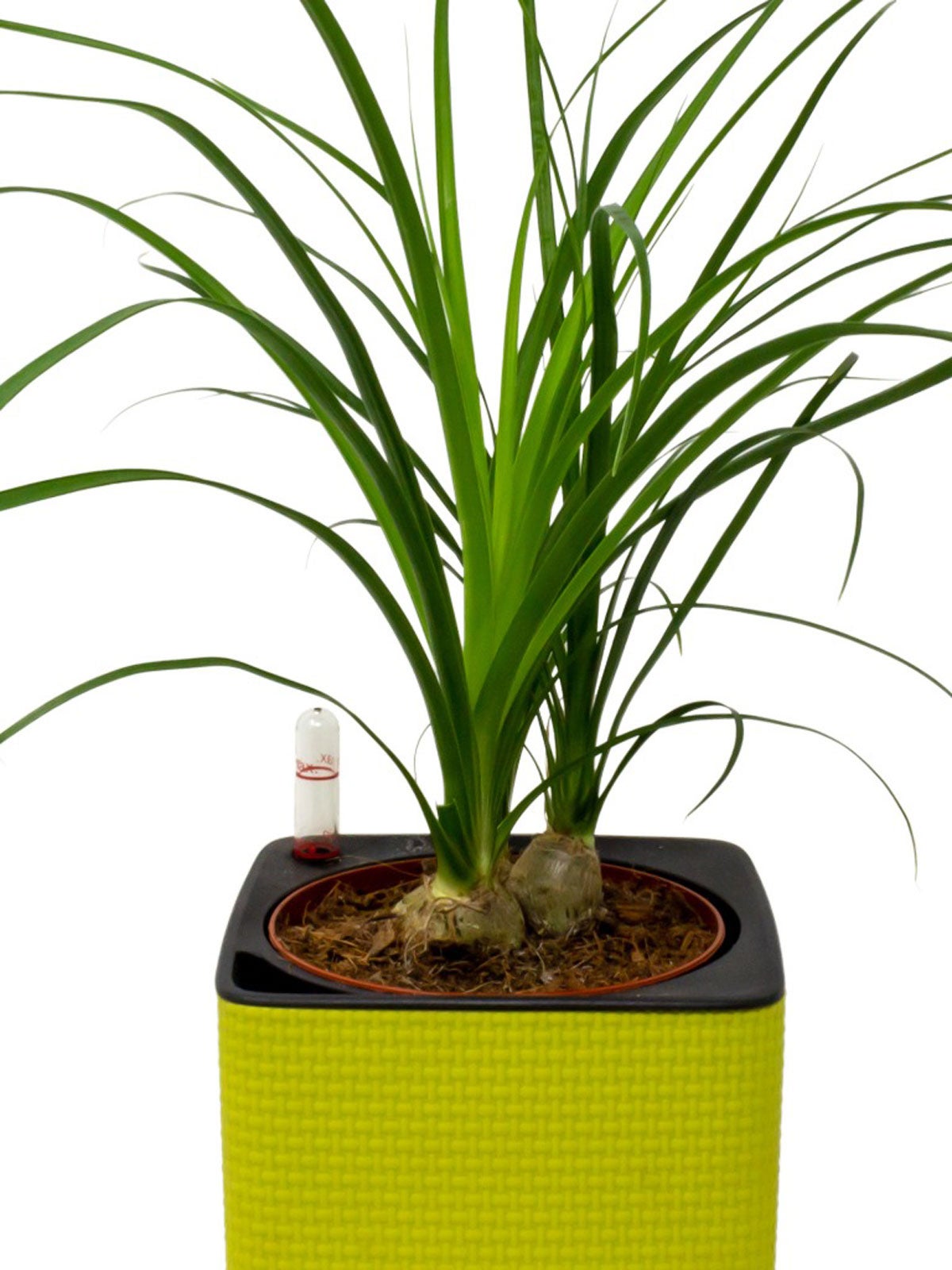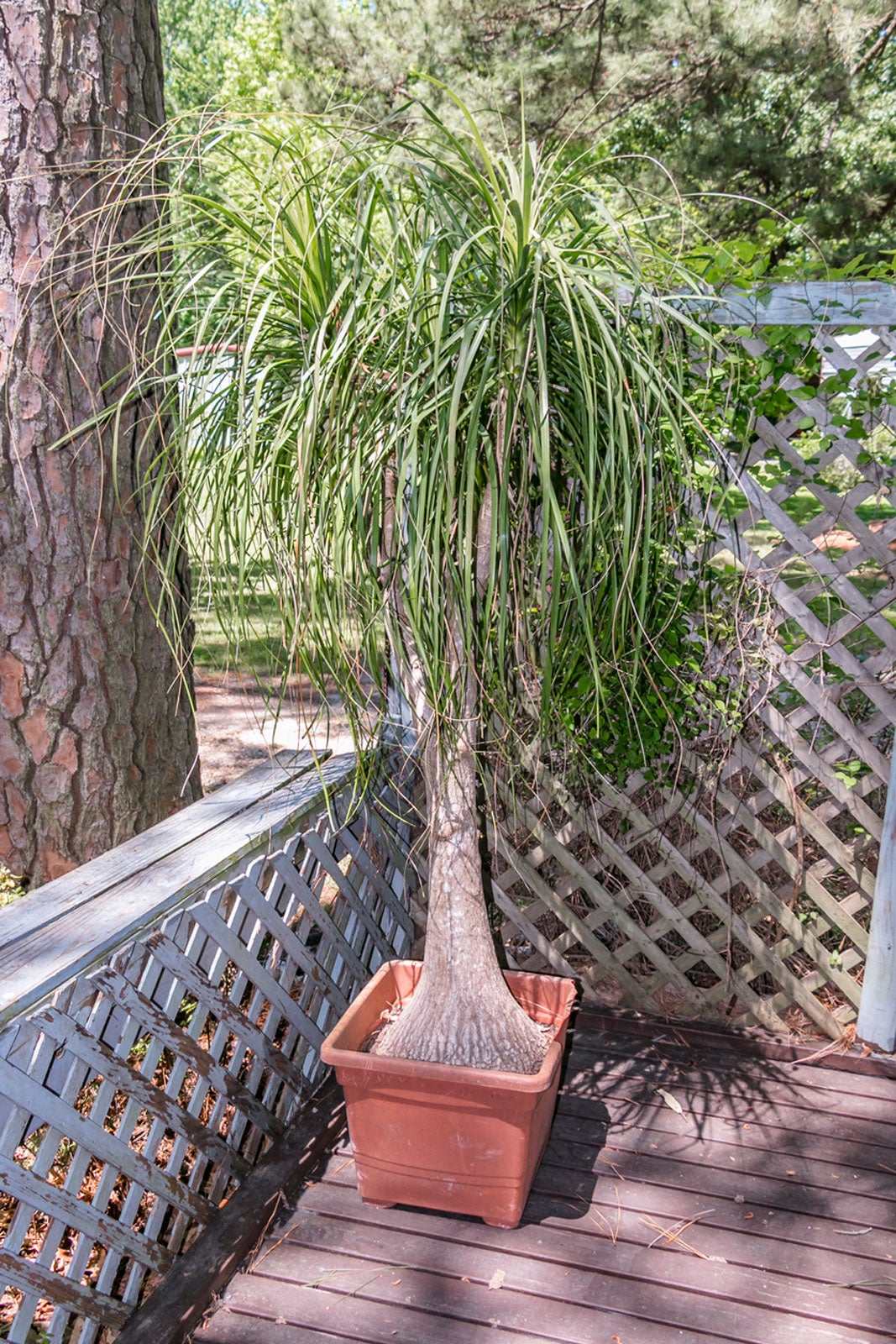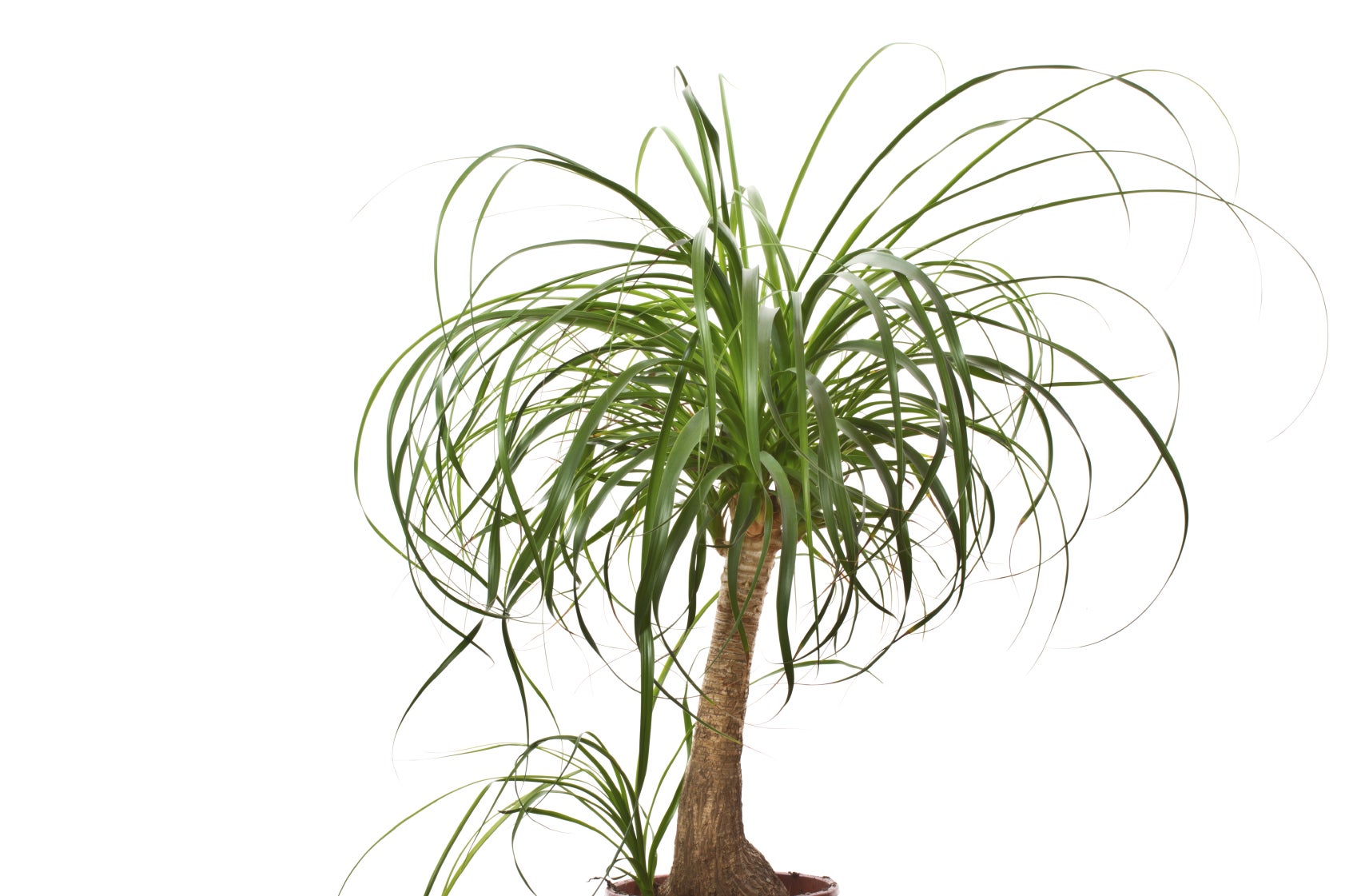Ponytail Palm Propagation: Propagating Ponytail Palm Pups


Ponytail palm plants are useful in the tropical to semi-tropical exterior landscape, or as a potted specimen for the home. The palms develop pups, or side shoots, as they mature. These smaller versions of the parent plant are easy to divide away from the mother palm.
Propagating ponytail palm pups will give you new little palms to share with friends and family or just provide you with another source of this attractive, ornamental succulent.
About Ponytail Palm Plants
Another name for this plant is the elephant's foot palm due to its thick, roughly skinned trunk. It is in the same family as agave plants and native to southeastern scrub desserts of Mexico.
It is not a true palm but a succulent, which saves moisture in the trunk. In times of drought, the trunk will shrink in diameter and get slightly shriveled bark. When the rainy season arrives, it sucks up and stores as much moisture as it can and the trunk swells markedly.
It is not a hardy plant in cooler zones and can sustain damage to the roots and trunk in excessively wet soils. As a container plant, ponytail palm care is minimal and the plant thrives on long periods of neglect.
The palm is slow-growing but may get up to 30 feet (9 m.) in its native habitat, although it is more likely to be less than 10 feet (3 m.) in captivity.
Ponytail Palm Shoots
This lively, little plant produces side pups as a method of propagating itself. Once the palm has matured, it begins to grow smaller versions of itself that sprout from the base of the mother. Removing pups from ponytail palms is the easiest way to grow more of the succulent palm. Ponytail palm shoots divide easily from the parent plant and then require rooting to produce viable plants.
Gardening tips, videos, info and more delivered right to your inbox!
Sign up for the Gardening Know How newsletter today and receive a free copy of our e-book "How to Grow Delicious Tomatoes".
Propagating Ponytail Palm Pups
Spring is the best time to divide ponytail palm shoots. Carefully excavate around the base of the parent plant to expose the base of the pups. Use a clean, sharp knife and cut the pup away from the adult plant. Pups that are 4 inches (10 cm.) tall are usually forming a root base and make the best starts.
Use a nearly soilless medium, such as a cactus mix or sand-based potting soil. Place the rooted end of the pup in a moistened medium in a well-draining container. Cover the container with a plastic bag lightly secured around the edges of the pot. Place the container in a warm room in moderate light. Every few days, uncover the pot and mist the surface of the soil.
Ponytail Palm Care For Newly Potted Pups
Provided soil drainage is adequate and you do not overwater the palm, this plant is remarkably unfussy. The plant only needs water every two weeks or so and you can completely suspend watering in the winter months. Cut off damaged or diseased foliage as it occurs and repot every 2 to 3 years. Optimum temperatures for ponytail palm plants are 70 to 80 F. (21 to 27 C.), but they do quite well in average home interior temperatures.

Bonnie Grant is a professional landscaper with a Certification in Urban Gardening. She has been gardening and writing for 15 years. A former professional chef, she has a passion for edible landscaping.
-
 Looking For Plants To Give You The Soft And Fuzzies? Try These 5 Fuzzy Leaf Plant Options
Looking For Plants To Give You The Soft And Fuzzies? Try These 5 Fuzzy Leaf Plant OptionsLovers of texture, drama, silver foliage and tactile plants will adore these special sensory garden additions. These fuzzy leaf plant options will leave you all aglow
By Susan Albert
-
 Get Ready For A Summer Of Hummers! Grow These Full Sun Hummingbird Plants and Flowers
Get Ready For A Summer Of Hummers! Grow These Full Sun Hummingbird Plants and FlowersIf you’re lucky enough to enjoy a sunny backyard, make sure you are maxing out on your pollinator opportunities and grow these full sun hummingbird plants and flowers
By Tonya Barnett
-
 Propagating Ponytail Palm Seeds – How To Grow Ponytail Palm From Seeds
Propagating Ponytail Palm Seeds – How To Grow Ponytail Palm From SeedsPropagating ponytail palm seeds starts with harvesting fresh seed from the ivory white to creamy green flowers. We'll tell you all you need to know on how to grow ponytail palm from seeds and increase your stock of this wonderful unique plant.
By Bonnie L. Grant
-
 Outdoor Ponytail Palm Care: Can You Plant Ponytail Palms Outside
Outdoor Ponytail Palm Care: Can You Plant Ponytail Palms OutsideGrowing ponytail palm outdoors is possible in warmer climates and caring for ponytail palm outdoors is not difficult. For more information about how to grow a ponytail palm outside, this article will help.
By Teo Spengler
-
 Flowering Ponytail Plants: Does Ponytail Palm Flower
Flowering Ponytail Plants: Does Ponytail Palm FlowerDoes ponytail palm flower? If you are hoping for flowers from this plant, you may have to wait up to 30 years to see it. This article contains additional information about the flowering of ponytail palm trees. Click here for more info.
By Teo Spengler
-
 Can I Replant My Ponytail Palm – How And When To Move Ponytail Palms
Can I Replant My Ponytail Palm – How And When To Move Ponytail PalmsWhen people ask how to transplant a ponytail palm tree, the most important factor is the size of the tree. Transplanting large ponytail palms is a different matter than moving a small one. Read this article to learn about ponytail palm replanting.
By Teo Spengler
-
 Pruning Ponytail Palms: Can You Trim Ponytail Palm Plants
Pruning Ponytail Palms: Can You Trim Ponytail Palm PlantsPonytail palms are truly interesting houseplants with their spiky poof of slender leaves and elephant skin trunk. They are not true palms, however, so can you trim ponytail palms? Read here for the answer on how to prune a ponytail palm.
By Bonnie L. Grant
-
 Bonsai Ponytail Palms: How To Prune Ponytail Palm Bonsai
Bonsai Ponytail Palms: How To Prune Ponytail Palm BonsaiThe ponytail palm bonsai tree is great a great low-maintenance option for the bonsai enthusiast or even for those that are new to bonsai plants. Get more information in this article.
By Susan Patterson
-
 Care Instructions For Ponytail Palm - Tips For Growing Ponytail Palms
Care Instructions For Ponytail Palm - Tips For Growing Ponytail PalmsIn recent years the ponytail palm tree has become a popular houseplant, and it is easy to see why. Ponytail palm is forgiving and easy in its care. Learn more caring for the plant in this article.
By Mary Ellen Ellis